Greetings and welcome to the Beginners Keto Diet Plan. My intention is that you will be able to begin your diet with the ketogenic diet guide and refer back to it if you have any questions or concerns.
Starting a new diet can feel overwhelming and intimidating. Believe me, I’ve been there! When I first learned about the ketogenic diet, I was both excited and nervous to make such a big change. I wondered, “Is this really healthy? Will it actually work for me? And how on earth do I even get started?”
I spent hours scouring blogs and books, trying to piece together information. It felt like trying to put together a puzzle with missing pieces. I made mistakes and dealt with side effects. There were days I wanted to throw in the towel because it seemed too hard.
But I promise, you can do this! I’ve created this guide to help you avoid the mistakes I made when starting keto. Consider it your roadmap, shining a light to guide you on your journey. With the right information and preparation, you can transition to keto smoothly. The payoff is so worth it!
Keto has transformed my health in ways I never thought possible. I’ve lost weight almost effortlessly while feeling satisfied and energized, without starving or depriving myself. My mood and mental clarity are better than ever. For the first time in my adult life, I feel in control of my body and health.
My hope is that you will experience these same life-changing benefits. This guide breaks down everything about the keto diet into simple, practical steps tailored for real beginners. There’s no prior knowledge required! I walk you through how to determine your macros, what to eat, how to track, plus tips to avoid mistakes and troubleshoot side effects.
Don’t be intimidated by the thought of starting keto. With the right information and preparation, you can do this! I believe in you. Now let’s get started!
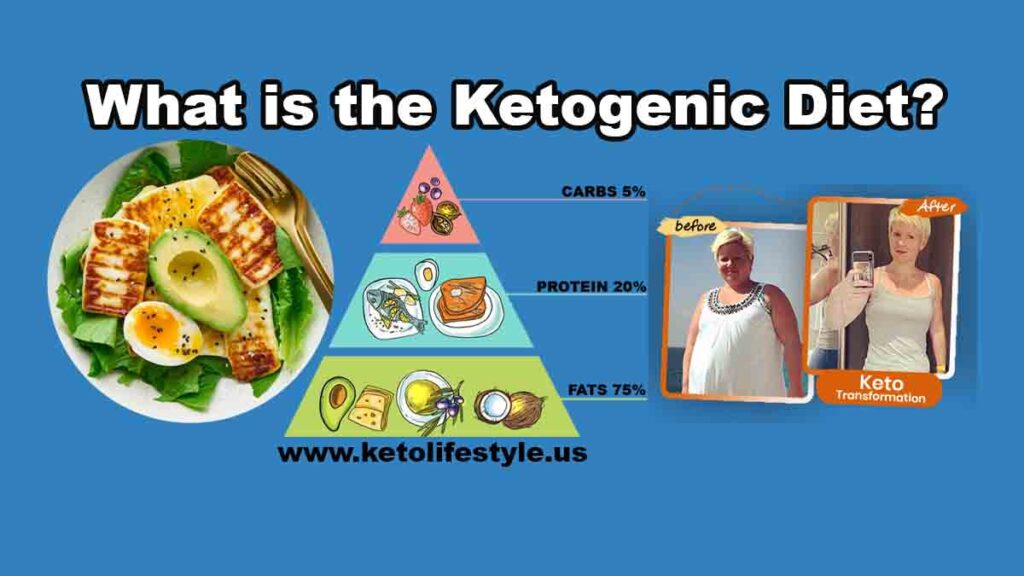
What is the Ketogenic Diet?
The ketogenic or “keto” diet is a very low-carb, high-fat diet originally developed in the 1920s to treat epilepsy in children. Researchers found that fasting —avoiding consumption of all foods for a brief period—helped reduce the amount and severity of seizures in epileptic children.
Over time, it became clear that a diet mimicking the effects of fasting could produce the same seizure-controlling benefits. The keto diet does this by forcing the body to burn fat stores for fuel instead of its preferred source: carbohydrates.
When you restrict carb intake significantly, the body enters a metabolic state called ketosis, where ketone bodies are produced in the liver to be used for energy instead of glucose from carbs. Ketone bodies can cross the blood-brain barrier efficiently, providing the brain with ample energy and seizure protection.
Today, the therapeutic keto diet is still an effective therapy for drug-resistant epilepsy and several other chronic health conditions. But it has also gained immense popularity as a weight loss tool due to its ability to boost fat burning, control hunger, and improve many other aspects of health.
How Does the Keto Diet Work?
To enter ketosis, carb intake must be significantly reduced to deprive the body of glucose, its primary fuel source. On a typical low-carb diet, carbs are restricted to 100–150 grams per day. On keto, however, carb intake is typically below 50 grams per day, although some keto dieters aim for under 20 grams.
When carb intake is this low, the body has no choice but to dip into its backup energy stores. First it breaks down glycogen, the storage form of glucose found in the liver and muscles. When those stores are depleted, the body starts converting adipose (body fat) tissue into usable ketone bodies. This process is called ketogenesis.
Ketone bodies are water-soluble molecules produced in the liver from fatty acid breakdown. When carbs are severely restricted, ketone production ramps up. Three primary ketones are produced:
- Acetoacetate (AcAc): First ketone produced from fatty acid breakdown. Some is converted to acetone, which exits via breath and urine.
- Beta-hydroxybutyrate (BHB): Primary ketone in circulation and most abundant. Used readily for energy by tissues including the brain.
- Acetone: Generated when AcAc breaks down spontaneously. Exits the body through urine and breath. Responsible for “keto breath.”
Once ketogenesis kicks in and ketone levels are elevated sufficiently, the body is in nutritional ketosis. Instead of burning glucose for fuel, it burns ketones. This gives the diet its “keto” name.
In nutritional ketosis, the brain switches to using a significant percentage of energy from ketones instead of glucose. Since ketones are produced from body fat, the diet essentially converts fat to energy and fuels the body with its own fat stores. For this reason, dietary fat must be increased significantly to provide enough fuel for both the brain and body.
Why Follow a Keto Diet?
The keto diet provides an array of impressive health benefits ranging from weight loss to enhanced cognitive function. Its therapeutic effects span dozens of chronic health conditions.
Here are some of the top scientifically-proven benefits of nutritional ketosis:
Weight loss: Keto diets have been shown to be far superior to low-fat diets for weight loss. Cutting carbs lowers insulin levels, allowing stored body fat to be readily accessible for burning.
Appetite suppression: Ketosis suppresses hunger and appetite in several ways. Ketones have a direct appetite-reducing effect on the brain. Protein and fat also control hunger better than carbs.
Heart health: Keto diets have been shown to lower risk for heart disease by improving triglycerides, HDL cholesterol, blood pressure, and other markers. The diet’s anti-inflammatory effects also protect against atherosclerosis.
Mental focus: Ketones provide an efficient alternative fuel source for the brain. Many people report clarity of thinking, focus, and improved concentration on keto diets.
Blood sugar stabilization: Low-carb, high-fat diets like keto can effectively lower and control blood sugar in those with type 2 diabetes or insulin resistance.
Neuroprotection: The keto diet has been shown to benefit neurological conditions ranging from autism, depression, and Alzheimer’s to Parkinson’s and epilepsy. It may also protect the brain against stroke, head trauma, and concussions.
Cancer-fighting: Ketosis produces oxidative stress in cancer cells while protecting normal cells, effectively targeting cancers without damaging healthy tissues. The diet also minimizes inflammation and insulin production, both factors that encourage cancer growth.
Acne reduction: Carbohydrate and sugar intake affect insulin levels, which in turn trigger sebum production and inflammation—major factors in acne development. Keto diets significantly lower glucose and insulin levels, improving skin clarity.
The keto diet also provides natural diuretic benefits, reduced allergy symptoms, and therapeutic effects for dozens of other chronic health conditions. Its mental and physical performance-enhancing effects make it an excellent diet choice for athletes.
Is the Keto Diet Safe?
The keto diet is generally considered safe for most healthy people. However, it does come with certain side effects worth noting. These usually only occur during the initial adaptation phase and disappear once ketosis is reached. They include:
- Keto flu symptoms like irritability, fatigue, cramps, headaches, nausea, and dizziness.
- Increased urination and thirst. A natural diuretic effect flushes out excess water and sodium.
- Constipation: Keto diets can have a constipating effect, though this usually passes after a few weeks. Fiber, fluids, and magnesium supplements can help.
- Nutrient deficiencies: Some vitamin or mineral deficiencies are possible over the long-term due to changes in nutrient intake. Supplements may be warranted for long-term keto dieters.
- Disordered eating: Binge eating, emotional eating, food addiction, and other disordered eating patterns may be exacerbated by restrictive diets like keto. Strict rules and focus on tracking can worsen these issues.
Keto is not recommended for those with any liver or kidney conditions, or disorders of fat metabolism. It may also not be a good fit for those with gout, gallstones, or gallbladder issues. Individuals on diabetes medications, blood thinners, or blood pressure medications should consult with a doctor before trying keto due to medication interactions.
To make the diet as safe as possible, be mindful of dairy consumption if lactose intolerant, properly supplement electrolytes, drink plenty of water, add gut-friendly fiber, and include nutritious high-fiber carb foods like non-starchy veggies.
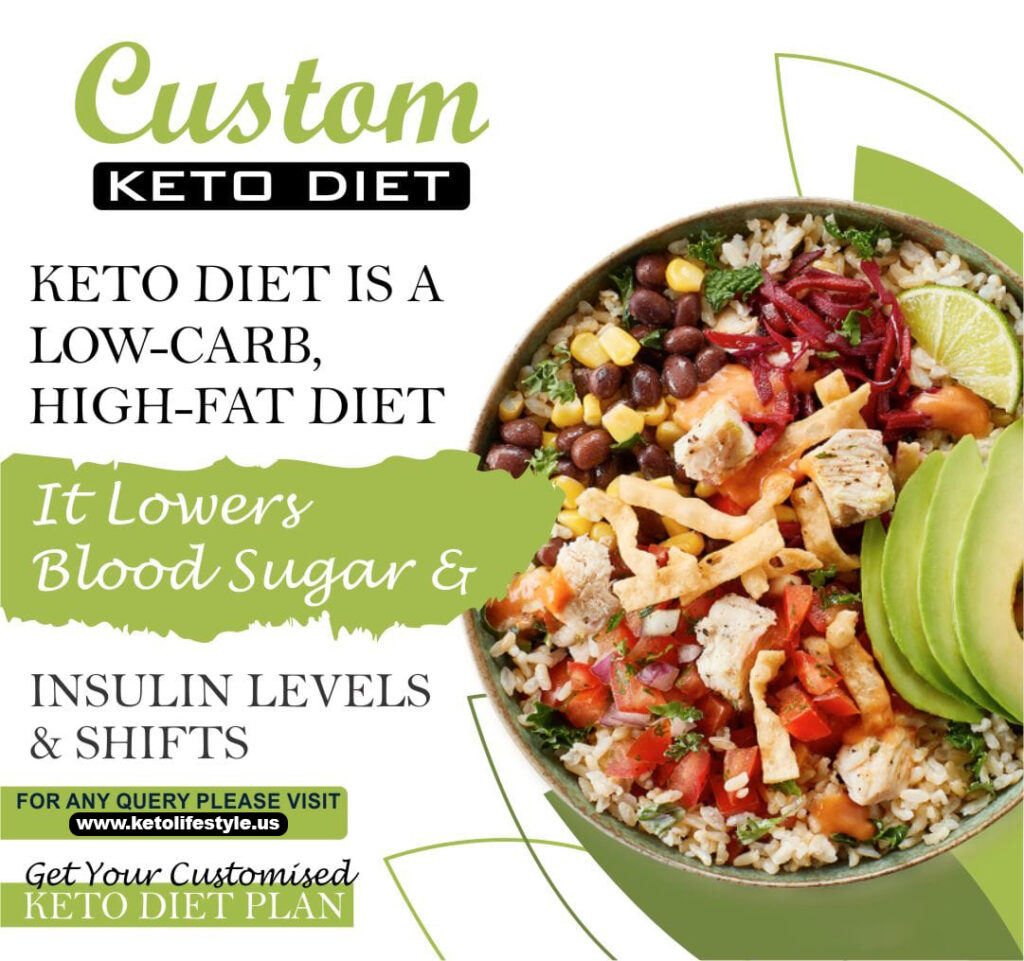
Ketogenic Diet Macronutrient Ratios
To reach ketosis, the standard ketogenic diet calls for a macronutrient ratio of:
- 70-80% fat
- 15-25% protein
- 5-10% total carbs
This equates to consuming:
- High amounts of fat, like fatty cuts of meat, eggs, nuts, seeds, avocados, butter, oil, and full-fat dairy if tolerated.
- Moderate protein mostly from meat, eggs, fish, and limited dairy. Excessive protein is converted to glucose.
- Very low carb from non-starchy vegetables and small amounts of berries and dairy if tolerated.
Keto macro ratios represent the percentage of total daily calories derived from each macronutrient. To determine your personal ratios, you’ll need to calculate your calorie needs and ideal carb limit first.
Here’s how to determine your keto macros in 5 simple steps:
- Calculate your total daily calorie needs for weight loss. Use a TDEE calculator online to determine the number of calories you need each day to maintain your current weight, then deduct 20-25%. The result is your calorie target.
- Set your net carb limit. Net carbs are total carbs minus fiber. Standard keto limits net carbs to 20-50 grams per day. Lower carb targets produce faster results.
- Determine your protein needs. 0.6 to 1 gram of protein per pound of lean body mass is recommended. Lean body mass equals current weight minus body fat percentage.
- Calculate fat grams. Total daily calories, minus calories from net carbs and protein, divided by 9 calories per gram of fat.
- Convert each macronutrient to percentages. To ensure correct ratios, divide your grams of each by total daily calories and multiply by 100.
Here’s an example keto macro calculation for a 180 lb woman with 30% body fat aiming for 25 net carbs per day:
- Calorie needs for weight loss: 1,800
- Net carb target: 25 grams
- Protein needs (@ 0.8 g per lean lb): 130 grams
- Fat grams: 1,800 – (25 x 4 cal/g carbs) – (130 x 4 cal/g protein) = 1,410 / 9 cal/g = 157 fat grams
- Keto macros: 25g net carbs (6%), 130g protein (29%), 157g fat (65%)
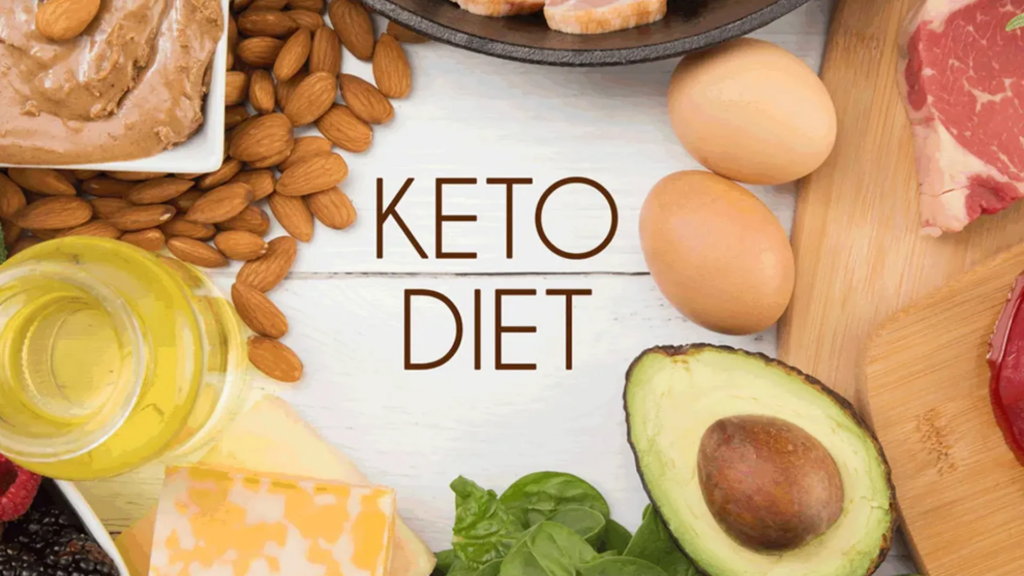
Getting Started: The Beginners Keto Diet Plan – Step By Step Guide
Transitioning to a high-fat, low-carb keto diet can take some adjusting from your body. Following the steps in this keto diet plan will help minimize side effects and set you up for success.
Phase 1: Lead Up (5-7 days)
Easing into ketosis gently over several days prevents an abrupt shock to your system. Gradually reduce carb intake while upping fat intake. Drink plenty of water and eat electrolytes. Manage expectations and be prepared for some discomfort.
Sample Menu: Eggs cooked in olive oil with avocado and tomato Grass-fed burger wrapped in lettuce Roasted chicken thighs with pesto and vegetables Salmon and zucchini noodles with Alfredo sauce
Phase 2: Test Ketosis (3-5 days)
Restrict carbs to 20-30 net grams per day. Increase fat and moderate protein. Test urine with keto strips or blood with a ketone meter to confirm ketosis has been achieved. The keto flu may be in full effect. Rest, hydrate, and power through.
Sample Menu: Bacon and avocado omelet Grass-fed steak with butter and spinach salad
Chicken coconut curry with cauliflower rice Tuna salad with olive oil
Phase 3: Adaptation (1-2 weeks)
Ketosis has been achieved. Carb intake can be reduced to under 20 net grams if desired. As the body adapts, keto flu symptoms should improve. Satiety, appetite control, cravings, and energy levels will start to regulate. You may see improved mental clarity.
Sample Menu: Keto breakfast smoothie with MCT oil powder Bunless burger with mushrooms and Swiss cheese Buffalo wings with celery and ranch dressing Keto taco bowls with ground beef, salsa, cheese, and avocado
Phase 4: Ketogenic Dieting (2+ months)
The body is keto-adapted. Weight loss becomes easier. Hunger and cravings are under control. Energy is stable. Various health biomarkers should be improving. Ketosis is easy to maintain at this stage. Just stay strict on carb intake and adjust fats and proteins as needed.
Sample Menu: Fried eggs with turkey bacon Steak stir fry with broccoli and cabbage
Chicken drumsticks with cauliflower mash and bacon bits BLT salad with avocado and olive oil dressing
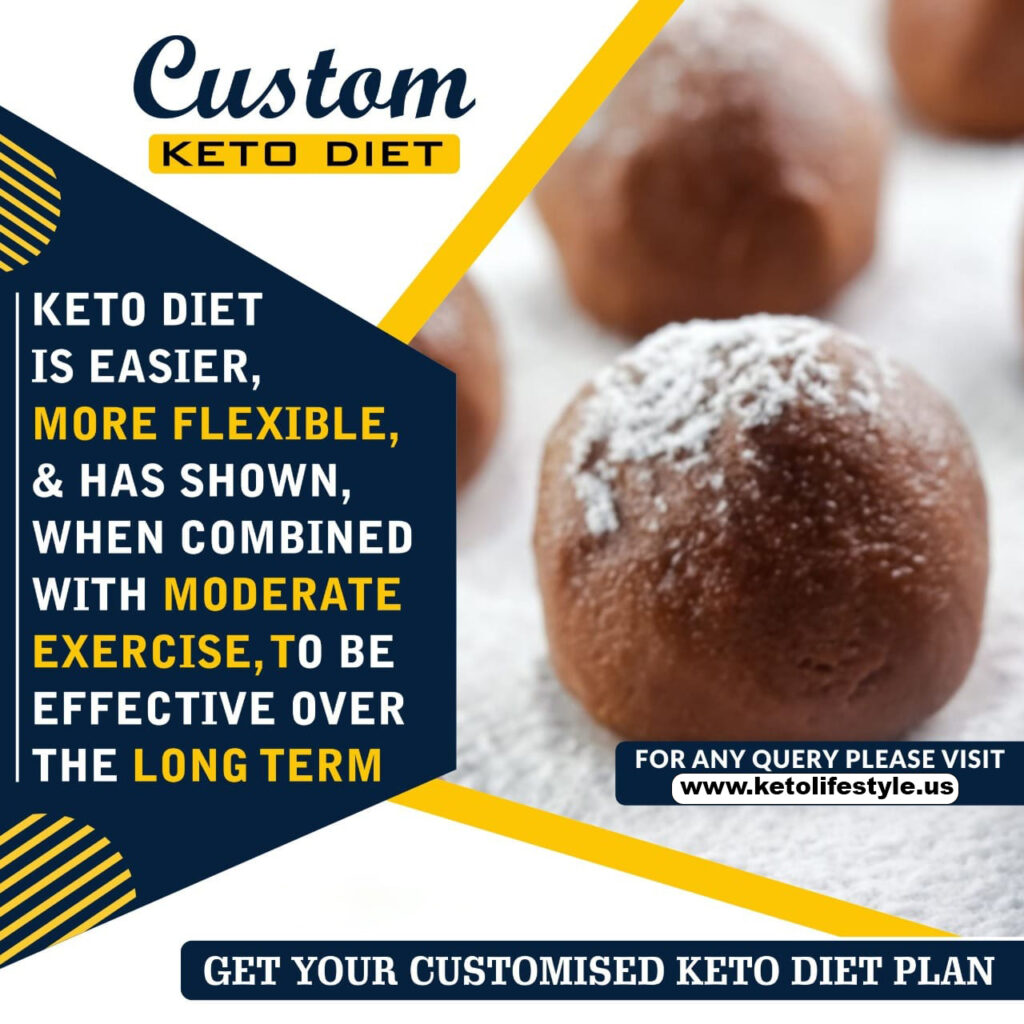
Keto Diet Foods: What to Eat & Avoid
Choosing the right foods is key to maintaining ketosis. With a little practice, it’s easy to learn which foods are keto-approved and which to limit or avoid.
Foods to Enjoy Freely on Keto
These foods should make up the bulk of your daily calories on keto. Prioritize them at each meal:
Meats: Fatty cuts of beef, pork, lamb, poultry, bacon, sausage.
Fish and Seafood: Salmon, sardines, trout, tuna, mackerel, mussels, shrimp.
Eggs: Pastured or omega-3 enriched. Prepared any style.
Non-Starchy Vegetables: Leafy greens, zucchini, tomatoes, peppers, broccoli, cauliflower, onions, garlic, mushrooms, asparagus, cucumbers, green beans, snap peas, Brussels sprouts, artichokes, avocado, olives.
Fats and Oils: Olive oil, coconut oil, MCT oil, avocado oil, butter, lard, tallow, duck fat, heavy cream, full-fat cheeses.
Nuts and Seeds: Walnuts, almonds, macadamia nuts, pumpkin seeds, chia seeds, flaxseeds.
Herbs, Spices, and Condiments: Sea salt, black pepper, mustard, chili powder, garlic powder, onion powder, dill, parsley, cilantro.
Beverages: Water, unsweetened teas, black coffee.
Foods to Limit on Keto
These foods are keto-friendly but contain more carbs or calories. Be mindful of portions:
Fruits: Berries are the lowest sugar fruits. Consume in moderation.
Dairy: Unsweetened nut milks, full-fat Greek yogurt, heavy whipping cream, sugar-free cream cheese.
Nuts and seeds: Cashews, pistachios, peanuts, sunflower seeds.
Sweeteners: Stevia, erythritol, monk fruit, sucralose.
Chocolate: Look for at least 85% cacao content with no added sugars.
Legumes: Green beans, snow peas.
Starchy vegetables: Limited portions of winter squashes, peas.
Processed meat: Bacon, deli meats, sausage, beef jerky.
Condiments: Ketchup, salsa, teriyaki sauce, soy sauce.
Alcohol: Dry wines, spirits, zero carb beer.
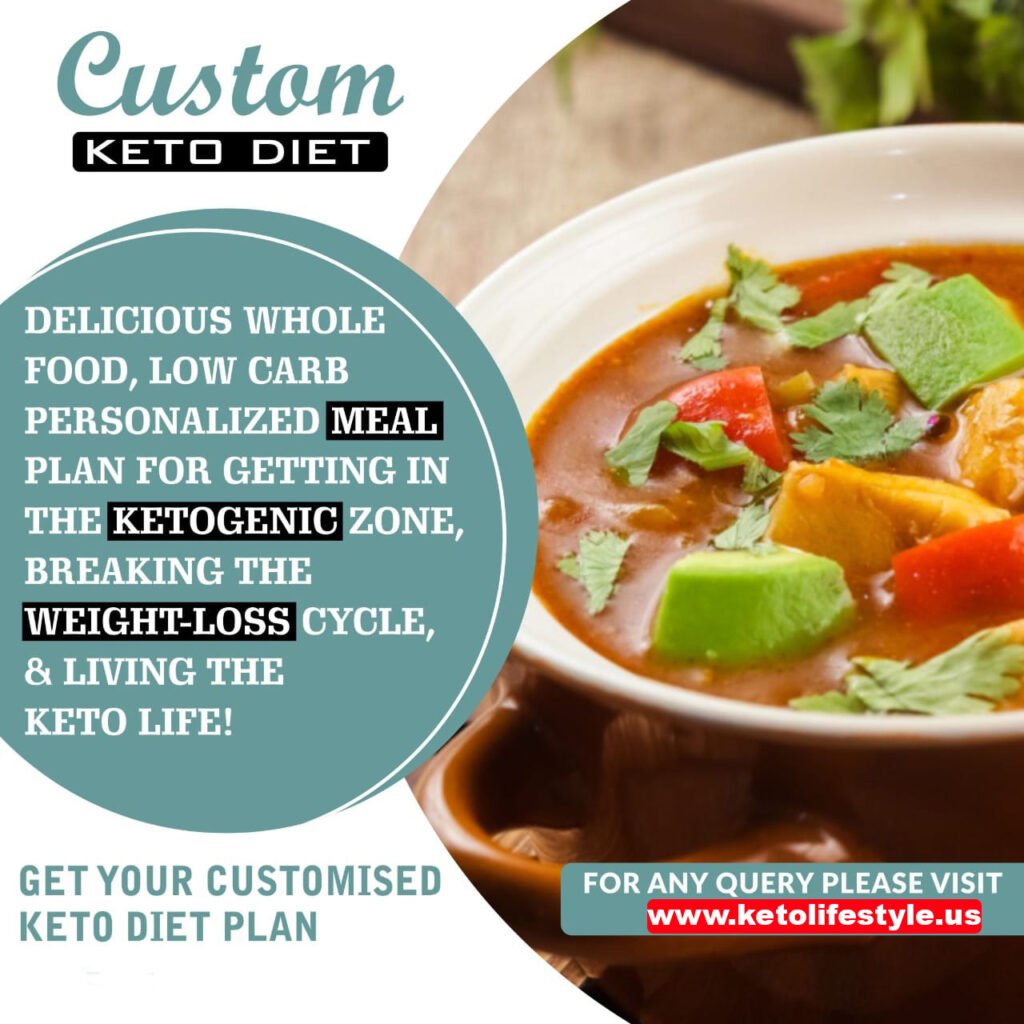
Foods to Avoid on Keto
These foods are too high in carbs, disrupt ketosis, and should be avoided:
- Grains: Bread, pasta, rice, cereal, etc.
- Starchy vegetables: Potatoes, sweet potatoes, corn, etc.
- Legumes: Beans, lentils, peas, chickpeas, etc.
- Fruit: Bananas, apples, grapes, mangos, etc. Only small portions of select berries allowed.
- Sweeteners: Honey, maple syrup, agave, sugar.
- Salty snacks: Chips, pretzels, crackers, popcorn.
- Baked goods: Cookies, cakes, muffins, donuts.
- Sugary foods: Candy, ice cream, milk chocolate, fruit juices.
- Beverages: Soda, sweet tea & coffee drinks, beer, milk.
- Processed foods: Frozen meals, snack bars cereal, etc.
- Sauces and condiments: Barbecue sauce, sweet chili sauce, sugary salad dressings.
Pay close attention to labels. Reject packaged foods with added sugars.
Keto Versus Low-Carb Diets
The keto diet falls under the umbrella of low-carb diets like the Atkins diet, but key differences exist:
Carb intake – Keto limits net carbs to a maximum of 50 grams per day, ideally under 20-30 grams. Low-carb diets range from 50-150 grams.
Ketosis – The keto diet’s dramatic carb restriction induces the metabolic state of ketosis. Most low-carb diets don’t restrict carbs severely enough to trigger ketosis.
Fat intake – Keto is high-fat and low-carb. Low-carb diets don’t have as high of a fat requirement, allowing higher protein and carb intake.
Purpose – Low-carb focuses on general weight loss and health improvement. The main goal of keto is achieving and maintaining ketosis for its therapeutic effects.
Foods – Keto eliminates all grains, rice, starchy vegetables, legumes, and fruit. Some low-carb diets allow limited portions of these foods.
Efficacy – Keto tends to produce faster, more consistent, and longer-lasting weight loss results, as well as stronger therapeutic effects for some conditions like epilepsy.
Both diets eliminate added sugars and refined carbohydrates. But keto’s induction of ketosis gives it a powerful metabolic advantage for quick fat loss and therapeutic benefits.
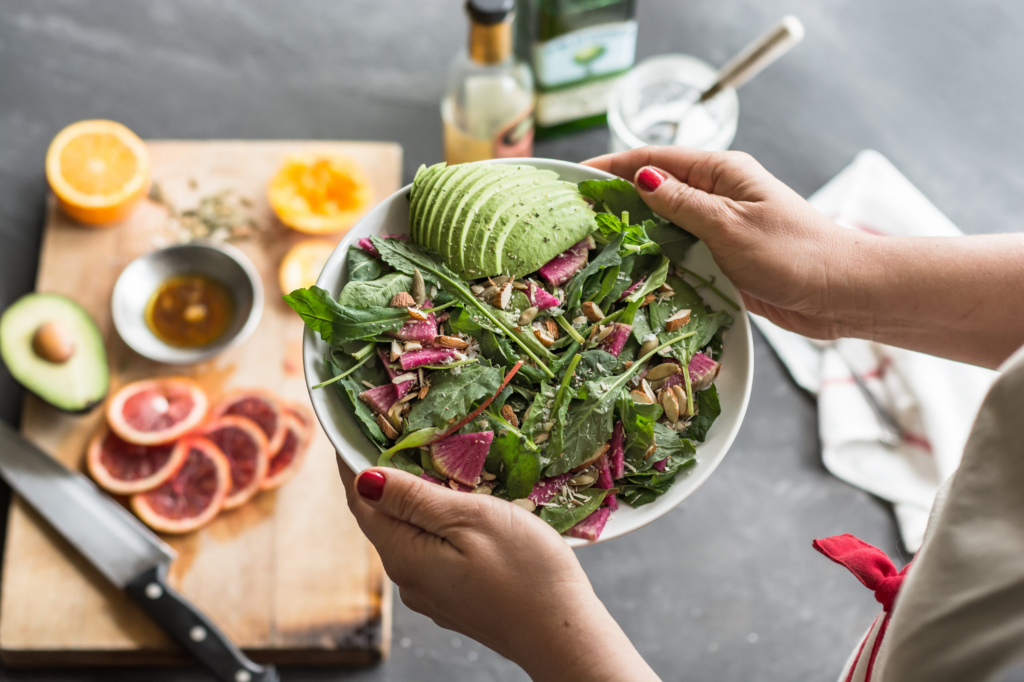
Intermittent Fasting and Keto
Intermittent fasting (IF) can be combined with keto for enhanced benefits. Both diets involve an element of fasting and can work synergistically to accelerate weight loss and ketosis.
Types of Intermittent Fasting:
16:8 method – Skip breakfast and restrict eating to an 8-hour window, like 11am to 7pm. Fast for 16 hours in between. This is the most popular and sustainable IF plan.
24-hour fasts – Eat normally one day then completely fast the next. Alternate normal eating and fasting days.
5:2 diet – Eat normally 5 days per week. Fast or drastically reduce calories 2 days per week, like 500-600 calories.
OMAD – Eat just one main meal per day, fasting for 23-24 hours between.
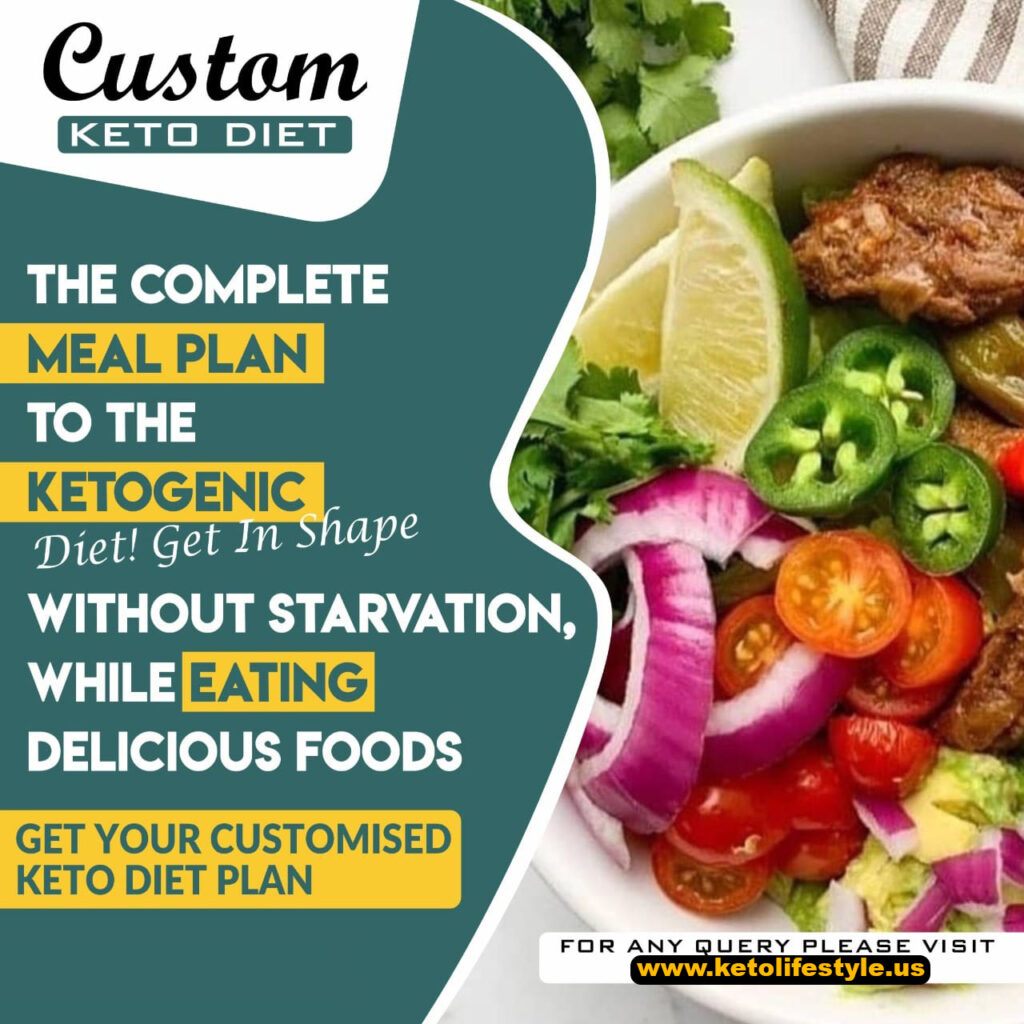
Benefits of Combining Intermittent Fasting and Keto:
- Achieve ketosis faster – Fasting depletes liver glycogen to quicken the shift to ketosis.
- Increased fat burn – Fasting boosts lipolysis to burn even more body fat for fuel.
- Appetite suppression – Ketosis and fasting suppress ghrelin, the “hunger hormone,” for powerful appetite control.
- Brain health – Fasting triggers ketone production for enhanced cognition and brain health on keto.
- Convenience – Having fewer meals to prepare and eat can make following a keto diet much easier.
Tips for Getting Started:
- Start with 12-14 hour fasts before jumping to 24-hour fasts which require more planning and preparation.
- Drink water, unsweetened tea, or black coffee during the fasting window.
- Take electrolytes before and during fasts to prevent headaches or lightheadedness.
- Eat a ketogenic meal when you break your fast.
- Try different IF approaches to find what works best for your schedule.
- Avoid excessive high-intensity workouts during fasts.
- Listen to your body. Hunger and energy levels will regulate after adaptation.
Fasting is very flexible with keto. Experiment to discover the optimal fasting routines that match your lifestyle and accelerate your individual keto results.
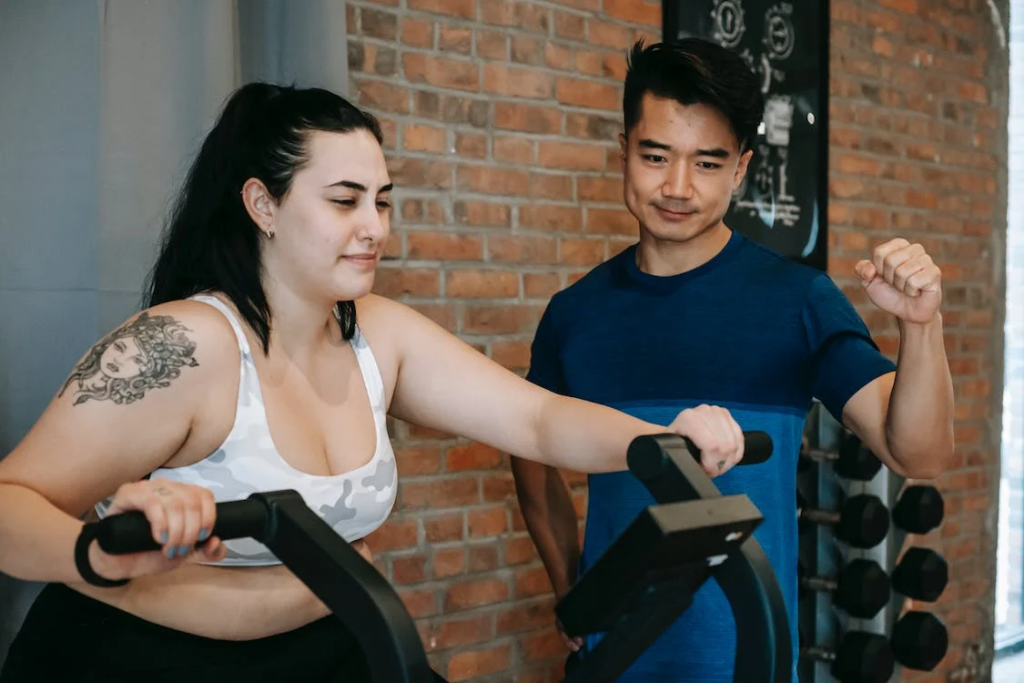
Exercising on the Ketogenic Diet
The keto diet can take some initial adjusting in terms of exercise performance and energy levels. But once adapted, exercising on keto provides some major benefits:
- Increased fat burning – More fat is burned at rest and during exercise for enhanced weight and fat loss.
- Improved energy – Your body adapts to efficiently produce and burn ketones for steady energy levels.
- Appetite suppression – Keto and exercise both suppress appetite for easier calorie control.
- Building muscle – Keto’s high protein intake helps build and maintain muscle when combined with lifting.
- Brain health – Ketones provide extra fuel for the brain during intense exercise.
followers report having their best workouts ever fueled by ketones. Performance and endurance can be maintained and even enhanced for long-duration aerobic activities like running and cycling.
Here are some tips for getting started:
- Stick to low- or moderate-intensity workouts at first. High-intensity intervals and heavy lifting may need to be reduced until keto adaptation.
- Monitor hydration and electrolytes closely to prevent cramps. Salt foods liberally and supplement with electrolytes if needed.
- Use small amounts of carbs strategically. Twenty grams of carbs 30 minutes before a workout can provide a quick energy boost.
- Try a pre-workout like HVMN Ketone for immediate ketone energy.
- Allow rest days, especially during the initial transition period. Your body needs time to become fat-adapted.
- Pay close attention to how you feel. Reduce exercise intensity or volume if feeling depleted.
Once adapted to exercising on keto, the diet can take your workouts to the next level. Just listen closely to your body’s needs and adjust as necessary.
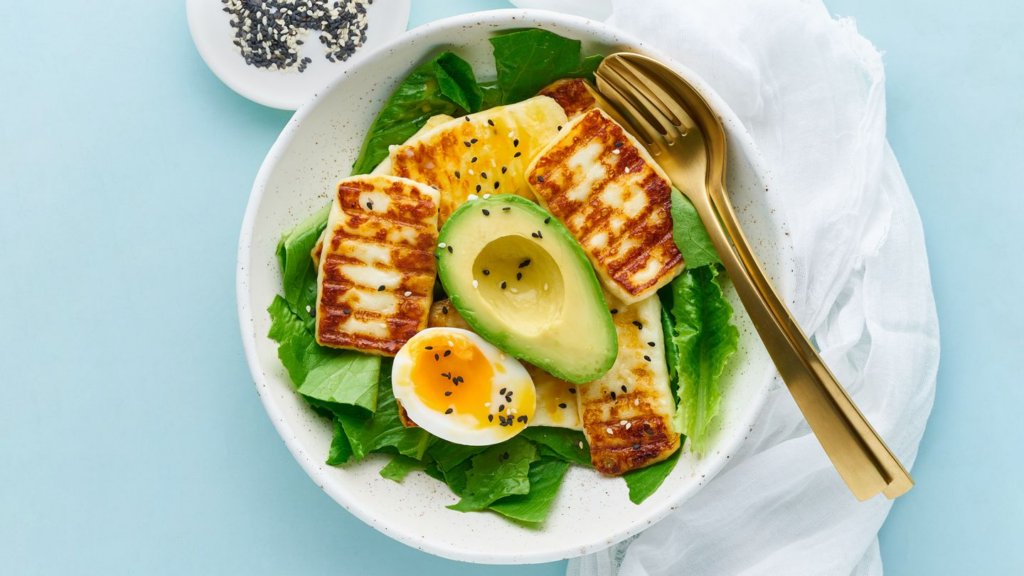
7 Day Keto Diet Meal
Planning keto-friendly meals ahead of time is key to maintaining ketosis. It helps control carbs and calories for weight loss while ensuring sufficient fat and protein intake.
Here’s a 7-day sample keto meal plan with simple recipes to get you started:
Day 1
Breakfast: Veggie scrambled eggs Lunch: Chicken salad wrap in lettuce leaves Dinner: Bacon cheeseburger casserole
Day 2
Breakfast: Keto yogurt with berries Lunch: Tuna salad stuffed avocado Dinner: Salisbury steak with cauliflower mash
Day 3
Breakfast: Mushroom omelet Lunch: Leftover salisbury steak Dinner: Chicken fajitas with grilled veggies
Day 4
Breakfast: Baked egg cups Lunch: Chicken coconut curry soup Dinner: Pesto salmon with zucchini noodles
Day 5
Breakfast: Chia pudding Lunch: Shrimp salad wraps Dinner: Meatballs with marinara sauce and Parmesan
Day 6
Breakfast: Ham and cheese omelet Lunch: Taco salad with ground beef Dinner: Chicken shawarma bowls
Day 7
Breakfast: Keto smoothie Lunch: BLT lettuce wraps Dinner: Meat lover’s pizza with a cauliflower crust
Refer to online recipes for exact ingredients and cooking instructions. Snacks can include nuts, cheese, avocado, and keto-friendly desserts.


Keto Shopping List for Beginners
Stock up on these keto staples before getting started:
Proteins: Eggs, bacon, sausage, beef, chicken, pork chops, fish, shrimp, turkey
Fats and Oils: Butter, olive oil, coconut oil, avocado oil
Non-Starchy Vegetables: Spinach, lettuce, tomatoes, peppers, broccoli, cauliflower, zucchini, onions
Condiments: Sea salt, black pepper, mustard, nutritional yeast
Dairy: Heavy whipping cream, almond milk, coconut milk, unsweetened Greek yogurt
Nuts and Seeds: Almonds, walnuts, macadamia nuts, pumpkin seeds
Herbs and Spices: Garlic, basil, oregano, cilantro
Beverages: Water, unsweetened tea, coffee
Sweeteners: Monk fruit, stevia, erythritol
Other: Coconut flour, almond flour, flax meal, cacao nibs, full-fat coconut
Keto Snacks
When hunger strikes between meals, these portable keto snacks keep you in ketosis:
- Jerky and meat sticks
- Cheese crisps
- Celery sticks with nut butter
- Cucumber slices with goat cheese
- Plain Greek yogurt with berries
- Hard-boiled eggs
- Chia pudding
- Avocado with lime juice
- Olives
- 90% dark chocolate
- Keto granola or cereal
- Pecans, walnuts, pumpkin seeds
- Seaweed snacks
Low-carb snack options are plentiful. Pre-portion snacks into bags or containers for grab-and-go convenience.

Potential Side Effects of Keto
These temporary side effects can occur while first transitioning to keto:
- Keto flu – Fatigue, headaches, cramps, nausea from the carb withdrawal phase. Usually lasts 1-2 weeks.
- High cholesterol – Short-term increase in LDL cholesterol is common but diminishes for most over time.
- Constipation – Due to lower fiber intake. Increase fluids, magnesium, and fiber supplementation.
- Nutrient deficiencies – Supplementation may be warranted long-term if low intake of certain vitamins and minerals persists.
- Bad breath – Caused by ketone byproduct acetone. Hydration, gum, and mouthwash help.
- Decreased performance – Athletes may need a couple weeks to adapt performance to using fat/ketones for fuel.
- Disrupted menstrual cycle – Can normalize after adaptation. If persists, check carb intake and calorie needs.
- Hair loss – Temporary effect from carbohydrate restriction. Resolves for most in a month.
Proper hydration, electrolyte intake, and sticking closely to keto guidelines usually prevent unpleasant symptoms. Consult your doctor if side effects persist.
Supplements for the Ketogenic Diet
Supplements are not required on keto but can optimize the diet in certain ways:
- Exogenous ketones – Provides direct ketone sources like beta hydroxybutyrate salts that boost ketone levels for quick energy. Helpful for workouts and getting into ketosis faster.
- MCT oil – This unique fat converts readily to ketones. Provides quick and sustained energy. Great for cognitive performance.
- Electrolytes – Helps maintain mineral balance in the body for optimal hydration, energy, pH balance, and muscle function. Prevent side effects.
- Fiber – Helps relieve constipation due to reduced carbs. Provides gut health benefits.
- Magnesium – An essential electrolyte that also relieves muscle cramps and insomnia issues on keto.
- Omega-3s – Found in fatty fish and supplements. Reduce inflammation and protect heart health.
- Digestive enzymes – Improve digestion and gut symptoms commonly associated with transition to a high-fat diet.
While not required, certain supplements can help optimize nutrition, promote electrolyte balance, and ease side effects of the keto diet.
Keto Mistakes to Avoid
Steer clear of these common keto pitfalls:
Too many carbs – Track carefully. Carbs sneak in everywhere. Too many kicks you out of ketosis.
Too little fat – Don’t fear healthy fats. Not consuming enough can leave you feeling depleted.
Not enough protein – Important to maintain muscle mass. Protein also helps control hunger.
Dirty keto – Avoid thinking that all fats are fair game. Fried foods, processed meats, trans fats, and low-quality oils affect health.
No tracking – Winging it makes it much harder to balance macronutrients and stay in ketosis. Track foods using an app.
No meal plan – Planning ahead takes the guesswork out so you don’t scramble at mealtimes.
Being too restrictive – Allow high-quality carb sources like berries and keto treats you enjoy. Better to be consistent than extreme.
Keto flu misery – Stay hydrated and up electrolytes instead of forcing through avoidable side effects.
No patience – Remember it can take weeks or longer to become fully keto-adapted. Trust the process.
Making Keto Sustainable
Here are some tips for healthy, sustainable keto dieting:
- Listen to your body. Adjust foods and macros until you find your optimal range.
- Add variety to prevent boredom. Try new recipes, ingredients, supplements, and keto snacks.
- Balance eating out with home cooking. You’ll save money while controlling what goes into your food.
- Stay hydrated. Carb restriction has a diuretic effect. Water and electrolytes are essential.
- Get quality sleep to support the hormones involved in weight regulation.
- Manage stress levels which can disrupt weight loss efforts.
- Avoid excessive alcohol. Limit to 1-2 drinks, if any, choosing dry wines and spirits.
- Have realistic expectations. A moderate, steady approach wins the race.
- Stay accountable. Seek community and expert support if you feel yourself veering off track.
Making keto work long-term is simple when you stick to whole foods, stay prepared, follow your plan, and make smart swaps when needed.
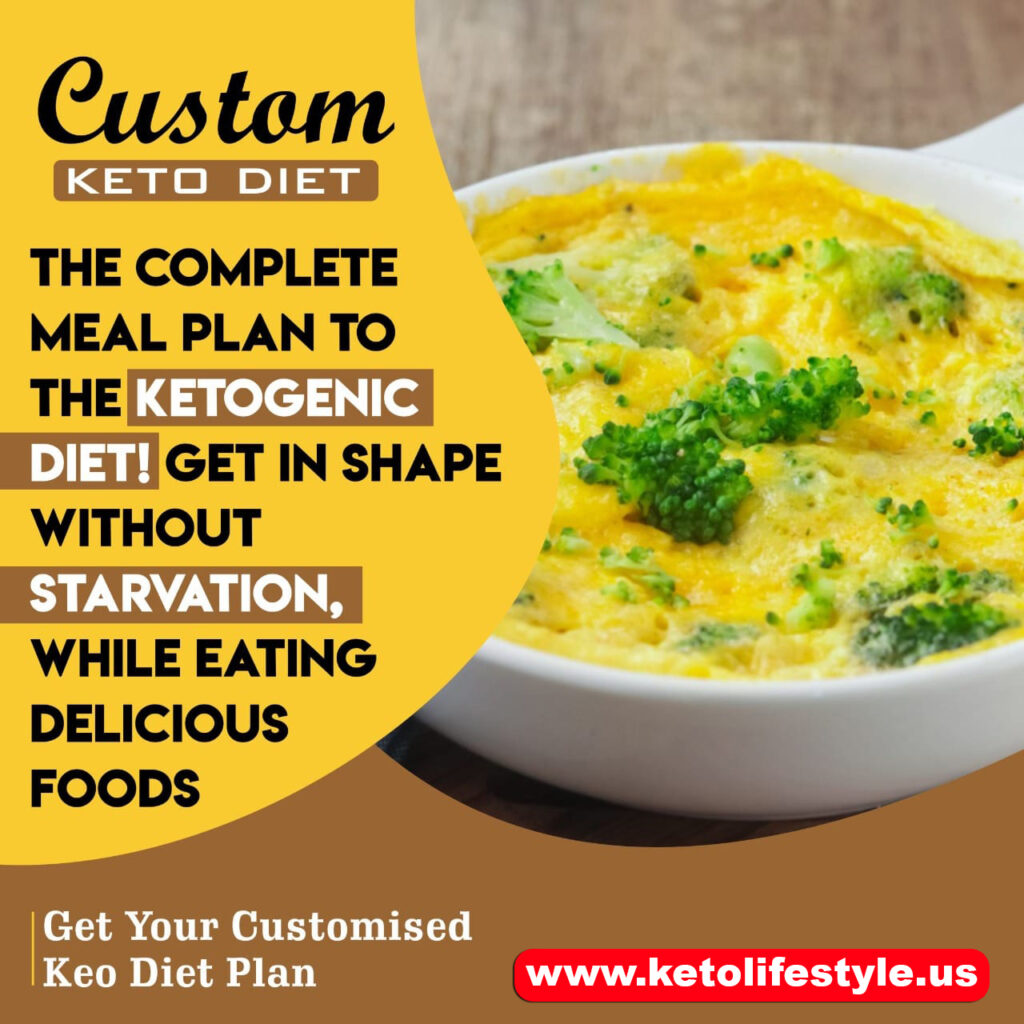
Frequently asked Questions
-
What are the benefits of the keto diet?
Some of the top benefits of the keto diet are weight loss, reduced appetite, improved mental focus and energy, balanced blood sugar, and reduced risk for chronic diseases like diabetes. The keto diet has also been shown to help treat neurological conditions like epilepsy.
-
How does the keto diet work to cause weight loss?
The keto diet works by putting your body into a metabolic state called ketosis. By severely limiting carbs and increasing fat intake, your body switches from burning carbs for energy to burning stored body fat and dietary fat in the form of ketones. This turns your body into a fat-burning machine and amplifies weight loss.
-
Is the keto diet safe for everyone?
The keto diet is generally considered safe for otherwise healthy individuals. However, it is not recommended for those with liver or kidney conditions, gallbladder issues, or disorders of fat metabolism. Diabetics on medications should consult their doctor before starting keto.
-
How quickly can I lose weight on keto?
Weight loss is highly individualized on keto. Many report losing up to 10 pounds in the first 1-2 weeks just from water weight and stored glycogen. After adaptation, most can expect to lose 1-3 pounds per week steadily. Rapid weight loss is common when first starting keto.
-
What are the side effects of starting keto?
Common temporary side effects include flu-like symptoms, headaches, fatigue, cramps, constipation, diarrhea, bad breath, disrupted menstrual cycle, hair loss, and reduced exercise performance. Proper hydration, electrolyte intake, patience, and sticking to keto guidelines helps overcome any issues.
-
Can I exercise on the keto diet?
Yes, you can and should continue exercising on keto. Athletic performance and endurance improves for most people after adapting to using fat for fuel. Monitor hydration and electrolytes closely. Carb intake before workouts can help boost performance.
-
What foods can I eat on keto?
Foods to enjoy freely include meats, fish, eggs, olive oil, butter, nuts, non-starchy veggies, and high-fat dairy. Foods to moderately consume include low sugar fruits like berries, low carb dairy, nuts, and zero carb sweeteners. Avoid grains, legumes, starchy veggies, sugary foods, and most fruits.
-
How do I know if I’m in ketosis?
Check for symptoms like bad breath, thirst, frequent urination, and potentially darkened urine. Use urine test strips to check for excess ketones. Blood ketone meters provide the most accurate measure of your level of ketosis.
-
What mistakes should I avoid when starting keto?
Avoid mistakes like going over carb limits, not planning meals, underestimating protein or calories needs, forcing through keto flu side effects, comparing yourself to others, and trying unsustainable fad diets claiming to be keto. Stick to the basics of whole foods low-carb nutrition and be patient.
-
How do I determine my keto macros?
Use these steps:
1. Calculate your calorie needs for weight loss using a TDEE calculator.
2. Set your maximum net carb limit (usually 20-50g per day).
3. Figure protein needs based on your lean body mass and activity level.
4. Calculate fat by subtracting calories from carbs and protein.
5. Convert each macronutrient gram amount to percentages of total calories. -
What should my keto macros look like?
Typical keto macronutrient ratios are:
▶️ 70-80% of calories from fat
▶️ 15-25% of calories from protein
▶️ 5-10% of calories from net carbs -
Do I need to track macros on keto?
Tracking your macros using an app like MyFitnessPal or Cronometer is highly recommended, at least initially. This ensures you maintain proper ratios to stay in ketosis and meet your calorie goals. Tracking gets easier over time as you get familiar with macros of common foods.
-
How can I make keto more sustainable long-term?
Tips for sustainability include prepping keto-friendly snacks, eating out less, meal prepping, balancing eating out with home cooking, staying hydrated, getting quality sleep, managing stress, and allowing yourself occasional treats like dark chocolate or keto desserts.
-
What supplements can I take on keto?
Helpful supplements can include MCT oil powder, electrolytes, exogenous ketones, omega-3s, magnesium, digestive enzymes, fiber supplements, and optionally protein powder. Prioritize electrolytes and MCT oil when first starting out.
-
Can I drink alcohol on the keto diet?
Alcohol is fine in moderation. Dry wines, spirits like vodka and tequila, and zero carb beer or wine are keto-friendly options. Limit to 1-2 servings max per day, if any. Avoid beer, sweet wines, and sugary mixed drinks.
-
How do I deal with keto flu symptoms?
Drink plenty of water and salt foods generously. Supplement with electrolytes. Eat more fat for energy. Reduce activity levels if needed. Rest and wait it out – symptoms should pass within a few days to a week as your body adapts to ketosis.
-
Is keto safe for type 2 diabetics?
Keto can be very beneficial for diabetics, but medications may need adjusted to prevent hypoglycemia. Work with your doctor, frequently test blood sugar levels, and monitor symptoms when first starting keto. Reduce diabetic meds as needed to match improved blood sugar control.
Conclusion
When I first discovered the ketogenic diet, I was hopeful but skeptical that it could really transform my health. After years of failed diets, I didn’t want to get my hopes up. But I knew I had to try something different.
Now, having experienced the life changing results of keto firsthand, I want to shout from the rooftops and tell everyone about it! I’m so grateful I took the plunge. The journey wasn’t easy, but it was so worthwhile. I feel like I have my life back.
My friend, I hope you’re feeling encouraged and empowered after reading this guide. You have everything you need to start keto the right way. Be patient with yourself through the transition period. Trust the process. Stay focused on how amazing you’ll feel once your body adapts.
This new way of eating can truly change your life, just like it did mine. I’m so excited for you! I wish you all the success and health benefits in the world. You’ve got this. Now go show the world the amazing new you!







[…] The Beginners Keto Diet Plan – The Complete Step by Step Guide […]
[…] The Beginners Keto Diet Plan – The Complete Step by Step Guide […]
[…] The Beginners Keto Diet Plan – The Complete Step by Step Guide […]
[…] The Beginners Keto Diet Plan – The Complete Step by Step Guide […]
[…] The Beginners Keto Diet Plan – The Complete Step by Step Guide […]
[…] The Beginners Keto Diet Plan – The Complete Step by Step Guide […]
[…] The Beginners Keto Diet Plan – The Complete Step by Step Guide […]
[…] The Beginners Keto Diet Plan – The Complete Step by Step Guide […]
[…] The Beginners Keto Diet Plan – The Complete Step by Step Guide […]
[…] The Beginners Keto Diet Plan – The Complete Step by Step Guide […]
[…] Learn Details […]
[…] The Beginners Keto Diet Plan – The Complete Step by Step Guide […]